Sansevieria, more commonly known as snake plant, was already a popular succulent plant even back in the Victorian times. Londoners discovered that these succulents were durable enough to withstand almost any growing conditions. In these modern times, it is said that this plant thrives on neglect. This has led to being one of the more staple houseplants today. In this article. let’s talk about snake plant flower.
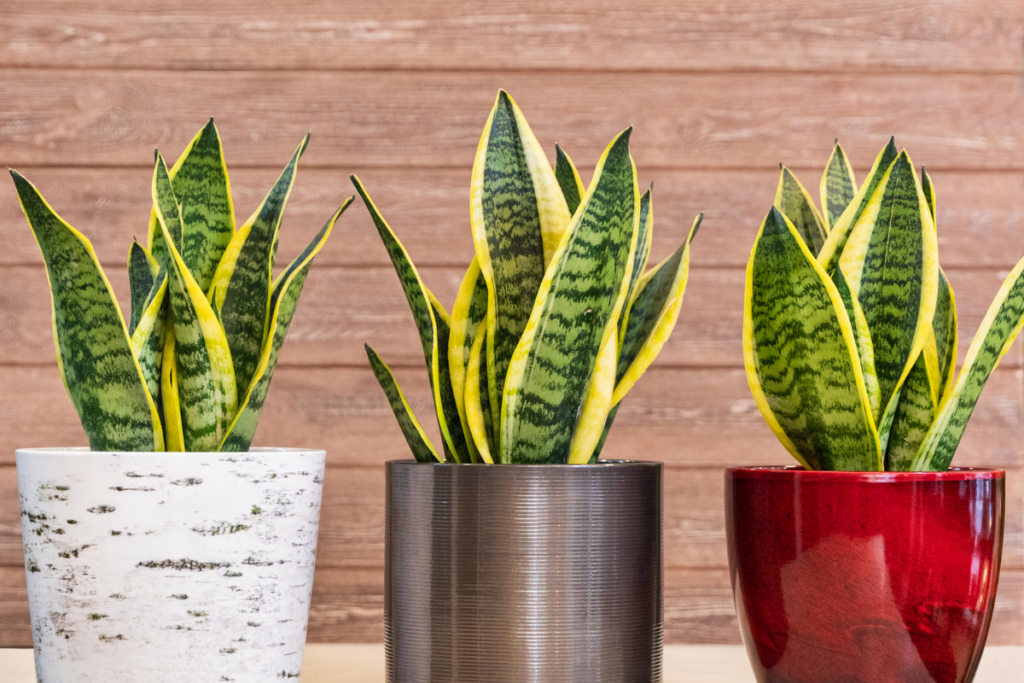
Despite their hardy nature, there is still intrigue that these plants bring to any home or space. Their leaves are almost architectural, growing vertically from the ground rather than on stems. Its olive green leaves are usually flanked by yellow and jagged streaks.
However, one of the more elusive things about this plant is its coveted blooms. This event is so rare that most owners won’t get to see their Snake Plants bloom. Some varieties of this plant don’t even bloom at all!
The two most important requirements for a Snake Plant to flower are lighting and maturity. Typically, these plants won’t begin to bloom for at least a few years after they are planted. Older Sansevierias kept indoors may also fail to flower since they don’t receive as much sunlight as they would in the wild.
If you’re lucky enough to own a variety that blooms, then there are several ways to tease out your Snake Plant to bloom. Continue reading below to know more about the perfect snake plant care to get it blooming!
Snake Plant Overview
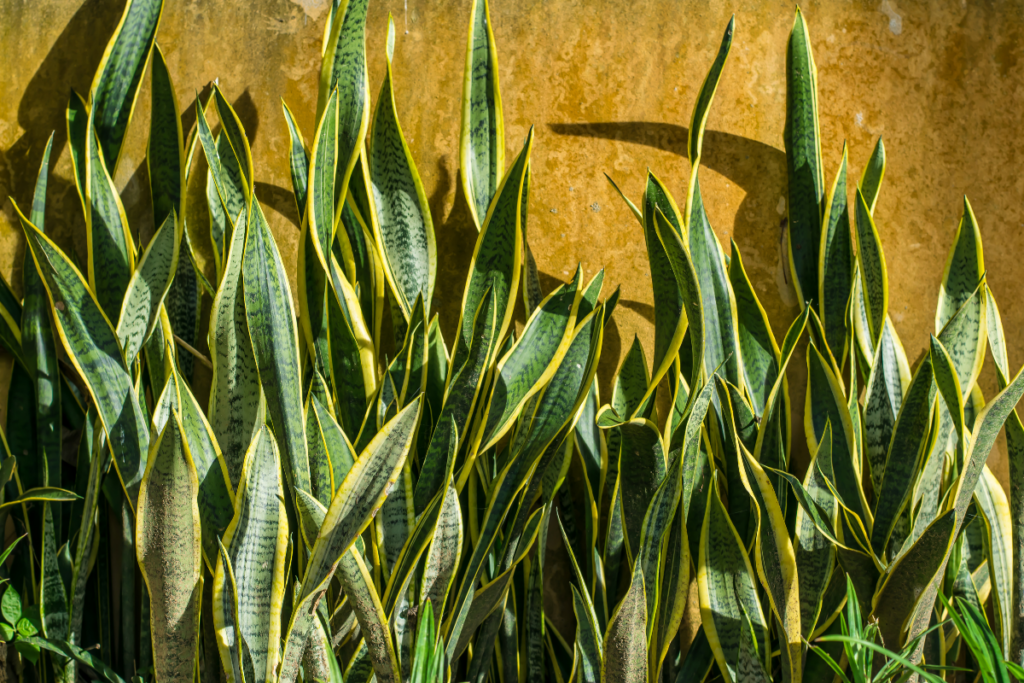
The Snake Plant is a flowering species from the Asparagaceae family. This plant hails from the regions of West Africa, mainly from Nigeria to Congo. It was scientifically known as Sansevieria trifasciata until it was moved under the genus Dracaena due to new information regarding its taxonomy in 2017
The plant has distinct dark green leaves with creamy yellow leaf margins. The upright leaves can grow up to two to three feet tall and around two inches wide. The Snake Plant is also commonly known as the Mother-in-Law’s tongue, Viper’s Bowstring Hemp, and Saint George’s Sword, among others.
More than its low maintenance care and attention and ability to thrive in harsher conditions, the plant has also become popular because it can filter indoor air and remove toxins such as benzene and formaldehyde. In addition, a new snake plant can emerge from leaf cuttings, the most common way to propagate this plant.
The most common Sansevieria is the Sansevieria trifasciata. However, some other varieties and cultivars have also become trendy over the past years. Check out some of the other variegated Snake Plant types:
- Sansevieria cylindrical (Cylindrical Snake Plant) – characterized by round, dark green leaves
- Sansevieria trifasciata’ Twist’ – characterized by twisted leaves with yellow variegated edges
- Sansevieria trifasciata’ Bantel’s Sensation’- characterized by white vertical stripes
- Sansevieria desertii (Rhino Grass) – characterized by red-tinted leaves
There are still a lot of Snake Plant varieties and cultivars out there that are worth checking and collecting. No matter what your preferences are, for sure, you can find the perfect Snake Plant for you. Don’t miss out on checking the top 18 rare snake plants you may add to your collection.
Snake Plant Flower
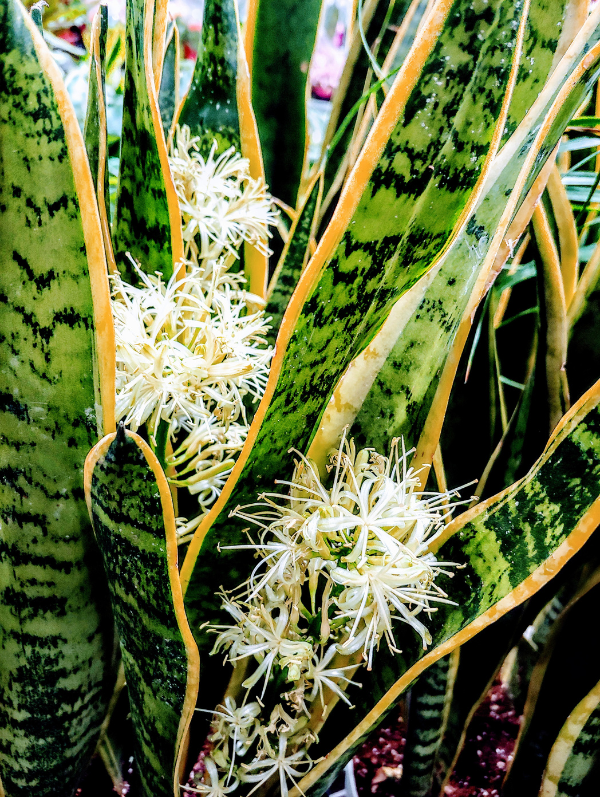
If you do get to see this once-in-a-blue-moon event, then you’ll be greeted by dainty buds that are beautifully scattered on a long flowering stalk. The tallest stalks can measure up to three feet and will sometimes loom over its leaves. Typically, only one flower stalk emerges.
From these stalks bloom petite tubular flowers which cluster around the stalk and have paper-thin petals. These may remind you of honeysuckle or lily flowers. Some varieties won’t have stalks, and their blooms can be found at the plant’s base.
Some varieties, like your Bantel’s Sensation, will carry different shades of flowers ranging from white, cream, and even green and yellow. The blooms are a delight to behold as they perfectly contrast the plant’s striking leaves. Not only do they look spectacular when they bloom, but they also bring forth an intense yet pleasant aroma.
If you’re lucky, your mother-in-law’s Tongue plant might bloom during its growing season, usually around spring. Unfortunately, this only happens once a year, and the blooms last only for a couple of weeks or so. Several berries might even replace the flower as it begins to wilt.
Fortunately, the dying of flowers doesn’t usually herald the plant’s demise, as compared to other flowering houseplants. Instead, flowering stalks eventually may appear annually to greet you!
You might be even more curious now that you know the deal with this plant’s flowers. But how do you exactly get yours to bloom? Unfortunately, the answer is also as tricky as the plant’s flowers are! Despite this, there are still several tips that may still help your Snake Plant to bloom along. Most often, Snake Plants just need to have their needs met, and at other times to just let them thrive on neglect, for their flowers to bloom.
How Do I Make My Snake Plant Flower?
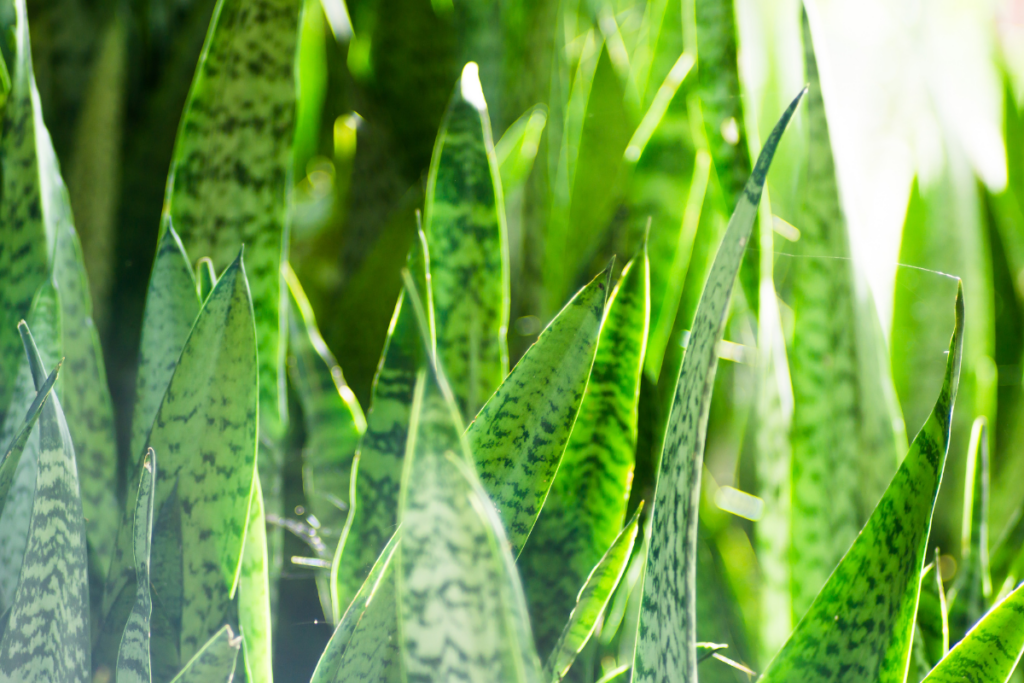
Light
Despite being well known for its sturdy nature, especially when it comes to its lighting needs, they notoriously tolerate and even thrive in the hands of the more neglectful plant parents. Typically, your Snake Plant can grow in a wide range of lighting conditions, from full shade to full sun.
However, receiving some tender loving care wouldn’t hurt your Snake Plant. They love a constant downpour of bright indirect light. Most gardeners, especially those that care for flowering plants, will tell you that flowers require a lot of energy for them to bloom.
It isn’t a guarantee, but if you pull your Snake Plant from the shadows of your confines and place them near a window that receives plenty of bright and warm, indirect light, you increase the chances for your Snake plant to bloom. Place it near or close to a window facing north, a well-lighted window with blinds, or put it near a bit further away from where a bright sunlight is sourced.
Do note that putting this plant in intense sunlight will fry and crisp up the leaves and begin yellowing on its edges. On the other end of the spectrum, if you keep this plant in the shade for too long, it will develop inhibited growth, dull leaves, and will grow lank in the pursuit of light. So be sure to show some love to your plant!
Water
Usually, less can sometimes be more, and that is especially true for the watering requirements of Snake Plant. They usually do not need too much water to thrive happily. In fact, they thrive better in relatively dryer soil as compared to one that is constantly moist. They are considered semi-succulent as they can store water within their leaves and hence their lower watering requirements.
If the snake’s plant soil is kept constantly moist, or worse, having it soggy, will most likely kill your plant as too moist of a growing condition can cause your plant’s roots and leaves to rot and may eventually kill your plant. With this in mind, it’s also not wise to keep your plant in extended periods of drought.
A good rule of thumb to follow for the watering of your Sansevieria Plant is to only water when the soil has completely gone dry to the touch before deciding to water it again. Depending on your local temperature, humidity, and weather conditions, this can happen as little as one to two times per month. During its active growing seasons, you might need to water a bit more frequently. When your snake plant goes into dormancy in the winter, you will need to keep your plant dryer for prolonged periods of time.
Some gardeners believe that you need to introduce some stress to your Snake Plant in order for it to be pressured enough for it to bloom. This can be done by just doing the bare minimum of the watering requirements of the plant. There can be potential issues that come with underwatering, but if you’re willing to take a risk, you can give this trick a go!
Related: Moonshine Sansevieria: #1 Care, Propagation, and Watering Guide
Soil And Nutrition
Since your Snake Plant is a borderline succulent, they are accustomed to soils that provide excellent drainage and aeration. However, if they are planted in a heavy growing medium, they can get bogged down in the water and run the risk of rotting. The best potting media for your snake plants include perlite, vermiculite, peat moss, coco coir, pumice, and lava rock. It would also be a great idea to mix in some coarse sand such as river sand.
Since your Snake Plant is also a relatively slow grower as compared to the other houseplants that you may have, they do not require high amounts of fertilization. However, to help make it bloom flowers, you can add a sprinkling of a good quality, high phosphorus fertilizer. Apply it every 3 to 4 weeks, especially in its growing season. Do not use too much, though, as this can cause a nutrient imbalance and eventually negatively impact your plant’s growth.
Do not apply this in the winter, as the plant will be going into dormancy, and its metabolism will be at its slowest. Resume feeding just as soon as spring comes again.
Temperature Ranges
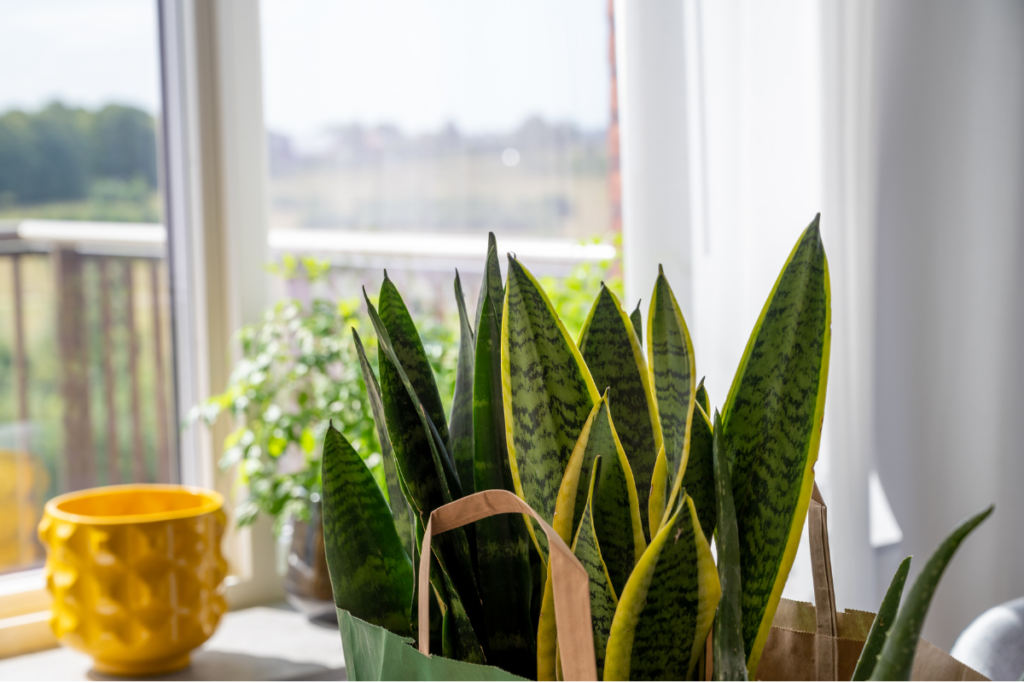
Since your Snake Plant is native to the jungles of West Africa, the temperatures they crave are that of tropical-like conditions. Therefore, they would thrive best in USDA zones 9-11. However, if your Snake Plants are located outdoors, you will need to be overwintered indoors as they will not tolerate temperatures that drop below 50°F (10°C).
Your plant also likes to thrive in humidity ranging from 30-50%, which is the average humidity at any given home or space. In short, if you feel comfortable in a certain space with regards to humidity, your snake plant will most likely be comfortable as well. However, if coaxing it to bloom, you can try placing it in a less humid area of your home, such as a living room.
Despite introducing some stress to your plant for it to bloom, it is not a very smart idea to keep your Snake Plant in drafty and freezing conditions. Higher temperatures, less water, and less humid conditions are safer ways to stress out your plant without instantly killing it. Also, these artificially applied stressors are easier to amend as well.
Age
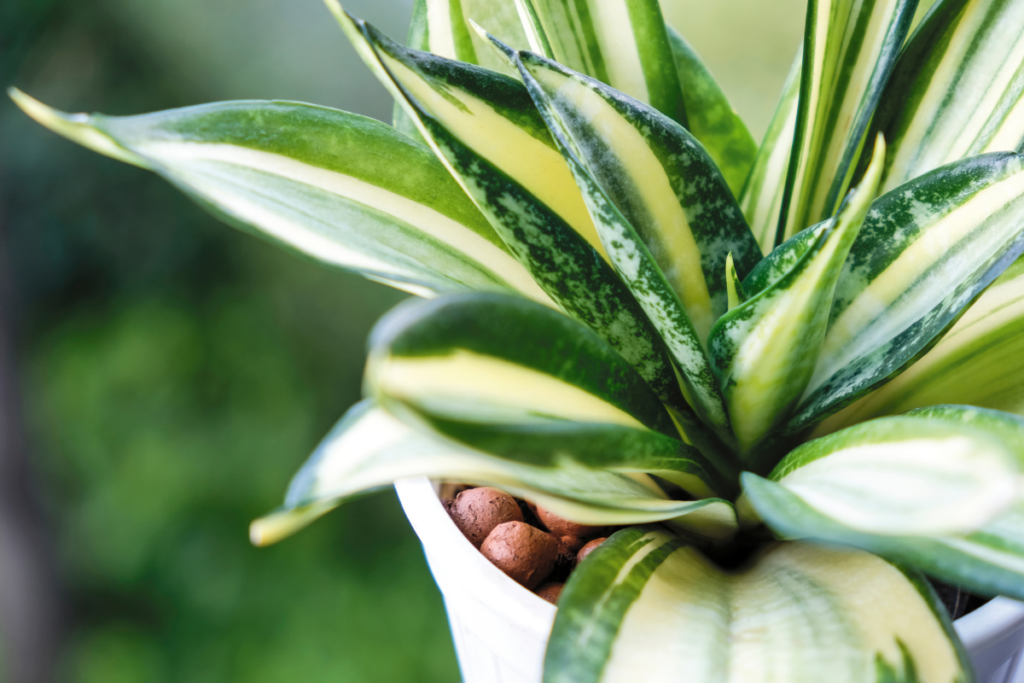
Finally, the last factor but definitely not the least, is the age of your plant. Generally, the more mature your plant is, the more likely it is to bloom. This isn’t to say that younger plants don’t bloom, but it is indeed quite rare. A mother plant is more highly to produce flowers than the young ones.
The older and more established your Snake Plant is, the higher the chances of it blooming, especially under the right growing conditions and if stimulus for stressors is sufficient enough. As the plant grows older, the more likely it is to encounter stress such as being root- and pot-bound.
When exposed to sufficient lighting conditions but are kept under neglect (ie. watering requirements), they tend to occupy the spaces of the pot more. The reduced space shifts the energy of the plant from growing more leaves into producing blooms instead.
So when it comes to growing your Snake Plant, just give it more time to mature and establish itself. Although it may take a little while, it is indeed fulfilling to see your snake plant bloom.
Related: Sansevieria Plant: Important Care Tips, Watering, and Propagation Guide For You
Fertilizers And Flower Myth
Before we end, we should dispel a crucial myth. Many people believe that there are specific fertilizers that can increase the likelihood of blooming in plants. These are often high-phosphorus formulations that are frequently marketed as “bloom boosters” or under other names that imply blooming induction.
It is true that a snake plant won’t flower if it is malnourished. However, once you’ve taken care of your plant’s fundamental needs, adding more phosphorus won’t help. All it accomplishes is leave behind mineral salts in the soil that could be hazardous.
During the growing season, give your Sansevieria a half-strength dose of a well-balanced fertilizer every four to six weeks. Avoid wasting money on gimmicky “bloom boosters” for snake plants.
Final Thoughts

Snake Plant blooms are some of the rarer phenomena that your typical plant parent will be able to encounter. Some do not even know that their Snake Plant is capable of blooming! These flowers often come out of nowhere for no reason at all, and plant parents might be delightfully surprised on one ordinary weekday.
Sansevieria, or Snake Plant does indeed require almost little to no care at all for it to thrive happily. Some even go to the conclusion that these thrive on neglect rather than meticulous care. Hopefully, we’ve shown you that meeting the plant’s lighting needs while thoughtfully inducing healthy stress on the plant can help coax your plant into producing its coveted and delightfully dainty white flowers.
Do bear in mind that these flowers have a strong aroma and also produce a thick and sticky nectar which can attract pests. At times, they can be quite the mess. Besides this, the rare blooms of your Snake Plant are truly an event to behold. Be sure to be there to appreciate it when your Snake Plant chooses to bloom!
For more information about Sansevieria flowering, you may watch the video below:
Frequently Asked Questions
Is the Snake Plant a good indoor plant?
Snake Plants are classic, versatile, easy to care houseplants. They are excellent for busy plant owners who have little time to tend to plants regularly. On top of that, they are also top air purifying plants, so they are perfect indoor houseplants.
Is Snake Plant poisonous?
Although they have been used traditionally as herbal remedies, the Snake Plant can cause harm when ingested. They can cause vomiting and nausea when taken in large doses. They can also numb the tongue and cause throat swelling.
How big do Snake Plants get?
Sansevierias can grow up to eight to 12 inches in height, given the right environmental conditions. Their sword-like foliage can also grow two feet in width.
How often do you water a Snake Plant?
As a general rule, only water your Snake Plant when the soil is already dry to avoid overwatering. Check the soil first and assess the moisture level. If the soil is dry, water your plant. If it is still moist, skip watering until it becomes dry again.
Can I put Snake Plant in the bathroom?
A bathroom is a great place for Snake Plants due to high humidity and moisture level. They can also thrive in low light conditions. Your Snake Plants are also great air purifiers, known to filter out formaldehyde, which is commonly found in bathroom products.
Editor’s Recommendations
21 Types of Sansevieria – Indestructible, Exotic, and Elegant Air Purifiers
Hello, Why Is It Yellow? 5 Reasons Why Your Sansevireia Is Changing Color







